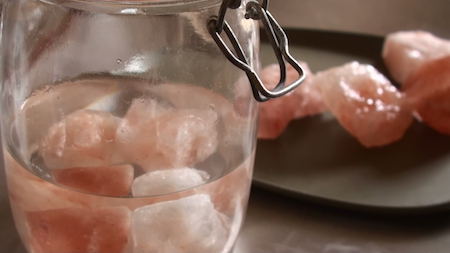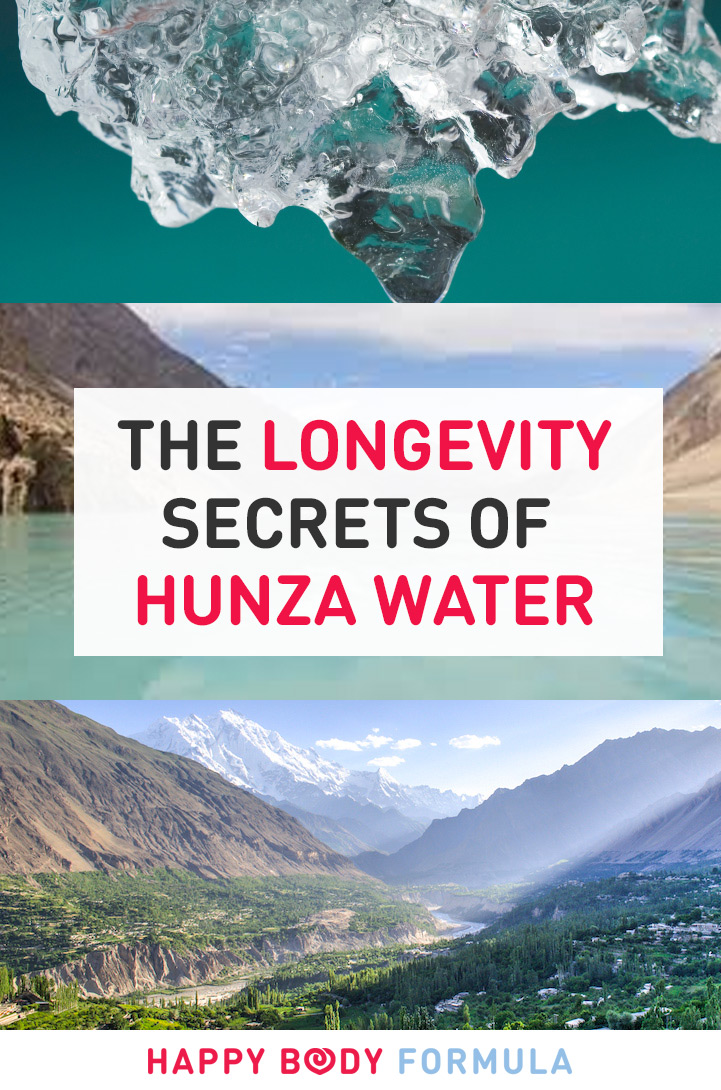Medically review by Kim Langdon

Have you heard of the Hunza Valley?
Beyond its visual beauty, surrounded by a landscape of the Himalayan mountains, this place has something seriously special going on.
It is considered a "Blue Zone," which is an area where people are known to live long, healthy and vibrant lives. You can read more about these regions in our series on longevity.
The population of Hunza is largely free of disease and chronic illness, thus prospering well into their later years without huge health complications.
In fact, they have the longest lifespan in the world - bragging rights include ages well into the 120s-140s.
Can you imagine?!
The Hunza population isn't just healthy; these people are notoriously smart, with a literacy rate of over 95%, and they are known for being incredibly friendly and gracious.
In Western society, we consider things like cancer, degenerative disease and deterioration of our bones to be fairly normal - if not expected - as we age.
While we know that a healthy diet, exercise, proper stress management, and good sleep hygiene go a long way in ensuring both quality and quantity of life, what's the secret to avoiding the aging process altogether?
The elusive Hunza way, of course.
What sets the Hunza population apart?

You might not believe it, but the secret is in the water.
There are many factors to longevity, but the bulk of the research done on this population comes down to Hunza water.
Naturally, this is good news for those of us who aren't planning to live in the Hunza valley; it's a little piece of this community that you can have, too.
Hunza water is H2O in its most pure and natural form. In an ideal world, we would all constantly have access to this, but the fact of the matter is that we don't.
In the Hunza Valley, the good stuff is all there is.
It's not exclusive, though; remote areas of Shin-Chan China and the Andes Mountains also contain this 'magic' water.
You know - places far, far away from the excessive pollution that most of us (and our water!) are subject to daily.
What is Hunza water?

It's likely obvious that Hunza water's name originated in its location, but this term has evolved to mean something more than that.
While you know where to find it, sourcing it (or making it on your own) isn't limited to the Hunza Valley of Pakistan.
Think about your water being alive. Kinda creepy, right?
Well, its liveliness translates into your liveliness, so it's good to embrace the facets that give Hunza water its distinct vigor.
Nobel Prize winner, Dr. Henri Coanda - also known as "the father of fluid dynamics" just so happens to know a lot about water, in case you couldn't tell.
In fact, he spent six decades studying Hunza water in an attempt to unearth just what it is about the stuff that literally gives people life.
He actually studied it for so long, that he retired in the midst of it at 78.
Not to worry, though; he passed on his extensive research to Patrick Flanagan who was deemed one of the most promising scientists by LIFE Magazine.
The point is, Hunza water has some serious facts to back up its anti-aging claims.
What did they find out?
Drinking water from the glacial streams of the Himalaya Mountains is perhaps the closest we can get to drinking from the Fountain of Youth.
The technical source of Hunza water is water that comes from melted glaciers.
Flanagan quickly found out that this was the only true common factor amongst the Hunza regions who all lived equally as long as one another.
In essence, this water has a few marked differences due to its source. Here is what Coanda and Flanagan found out.
All of these characteristics of the water are tied together.
Keep in mind, these are the findings of a science prodigy over decades, so the science runs pretty deep!
- It contains negatively-charged hydrogen ions. This is important because hydrogen is one of the most powerful antioxidants. This helps to neutralize free radicals in the body. In addition to living in a society with little to no pollution or environmental toxins, it's no wonder these people are living 120 years!
- Mineral colloids efficiently deliver nutrition. Basically, a specific "activator" reduces the size of the nutritional elements of Hunza water. However, it doesn't compromise the actual nutrition - it just makes it more compact, thus easier for the body's cells to receive.
- Lower surface tension. In essence, this means that Hunza water more closely resembles the water found around the cells in our body. This is getting a bit complicated, right? Here's why that matters...
- Increased "net charge." Basically, fluids are able to move between cells, flush out toxins and absorb more water into the cells.
- High alkaline pH. This can naturally help the body to neutralize acids and regulate pH levels which have been linked to reducing the risk of cancer and - you guessed it - a longer life!
How to make Hunza water

You don't have to book a flight to Pakistan and head for the hills to get a taste of this coveted elixir.
Flanagan was pretty dedicated to getting down to the bottom of the ins-and-outs of Hunza water, so naturally, he figured out how to recreate it without having to drink water from the glaciers themselves.
What you'll need
Instructions

- Sterilize the large glass container or pitcher, then fill it with filtered drinking water.
- Cover the container, and set it in a sunny window for 24 hours to increase the "chi" or life force of the water. This step replicates the natural sunlight water would be exposed to whilst melting down the glaciers in the Hunza Valley.
- Using large, rock-sized Himalayan salt crystals, place as many as you can in a mason jar. Remember, don't cover your jar with a metal lid as it can react with the salt; choose a wooden or plastic lid instead.
- Fill the jar with your sun water, pouring it over the salt crystals. Refill the "sun water" and set it back in the window. You will have your "saltwater" and your "sun water."
- Let the crystals sit in the water for another 24 hour period. This will allow the water to become saturated.
- When "infused," this water is called sole; you’ll remove about a teaspoon of sole a day, and continue to top the jar with more water as long as you can still see the salt crystals. Make sure to use a non-metal teaspoon to remove sole. Add a teaspoon to a full glass of sun water.
- Drink on an empty stomach in the morning and wait approximately 30 minutes prior to consuming any other food or beverage.
- Once the salt crystals in your sole are gone, you can start over the process.
Do you drink sole, or have you heard of Hunza water? This population is one of the longest-lived on the planet! Share this healthy habit with your friends.
This article was fact checked for accuracy by Dr. Kim Langdon, MD. As always, this is not personal medical advice and we recommend that you talk with your doctor.
Share on Pinterest?

References
Kimberly Langdon M.D. is a retired University-trained obstetrician/gynecologist with 19-years of clinical experience. She delivered over 2000 babies to mothers in a suburban Midwestern community.

Could you tell us why it need to be done with crystal salt, rock salt, and not table salt, ground salt?
Crystal salt provides the silica which is used to carry the essential electrons around the body and into the mitochondria for cellular health, and is the reason why Hunza water is so unique.
The Himalayan Pink Salt comes from salt mines that were first established over 2000 years ago by Alexander the Great. These mines are nowhere near the Hunza Valley and are in fact a few hundred kilometers south of Islamabad. The rock salt is localised in a Triassic Red-bed sequence of rocks. The salt is pink to deep purple and is loaded with minerals. However, there is no such salt present in the Hunza Valley. I worked there for a number of years and visited both the salt mines and explored for minerals throughout the region, Gilgit, Hunza, Naga, Sust, Shimshall and the Khundjerup.
So you’re saying this approach is unlikely to create Hunza water? Dr Patrick Flanagan sells Crystal Energy which contains the silica neccessary to produce Hunza water, but if it can be done with salt, that would obviously be cheaper.